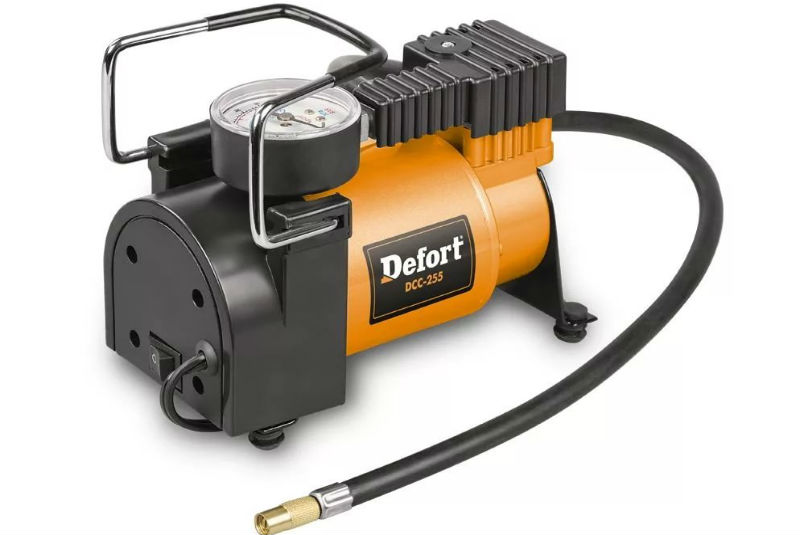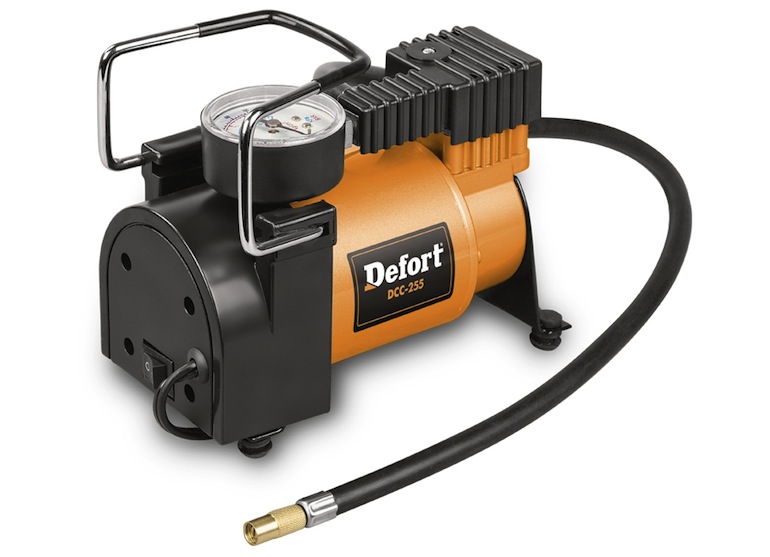
How to choose a car tire compressor
To inflate car tires to the desired pressure, a device such as a compressor is used.
The compressor is the same hand pump, but it performs its work due to the presence of an electric motor. In principle, tires can also be pumped up using an ordinary hand pump, but this activity is primarily for those who love long-term physical labor in the air.
The car compressor pumps up your tires in just a few minutes, and you do not have to strain yourself.
In stores you can find a wide range of automotive compressors from different manufacturers. To choose one of them, you need, at a minimum, to understand its device and your needs, because if you choose a compressor to pump up the tires of your hatchback, then a low-power instance will be enough for you, and owners of large SUVs and trucks must have a compressor with good performance.

How to choose a car compressor, which Features important?
First of all, let's figure out what a compressor is and what types there are.
The compressor is used to compress and pump air, it is driven by an electric motor that runs on a current source, in our case it is either a cigarette lighter or a battery.
There are two main types of compressors:
- vibration, or membrane;
- piston.
The main elements of any compressor are: a working cylinder, an electric motor, a pressure gauge to display air pressure.
- Vibratory compressors are considered the most affordable. They pump air due to vibrations of an elastic membrane in the working cylinder.
- In reciprocating compressors, air is pumped due to the pressure created by the piston moving in the cylinder. Piston devices are more common.
Both types have their advantages and disadvantages.
Pros and Cons of Diaphragm Compressors
Their device is simpler and due to this the price for such models is lower - this is one of the main advantages.
In addition, they are lighter in weight. The resource of their work is much greater than that of reciprocating compressors. True, the main problem is that the rubber membrane loses its elasticity at sub-zero temperatures, cracks appear in it and the air pressure decreases. Luckily, replacing it is easy enough.
There are no rubbing elements in diaphragm compressors. The only thing that can break down over time is ball bearings, but they can be replaced quite simply. In any store you can find a compressor repair kit, consisting of a membrane and two bearings.
Also, vibration compressors are not capable of creating high pressure - a maximum of 4 atmospheres, but if you consider that the pressure in the tires of cars is from 1,8 to 3 atmospheres, then this is enough for you.

Reciprocating compressors
Already from the name it is clear that the piston, which moves in the working cylinder, is responsible for pumping air. The energy of motion is transferred to the piston from the electric motor through the crank mechanism, that is, the crankshaft. It is clear that since there is a piston and a cylinder, then there are moving parts and friction, and friction is heat and wear.
Piston compressors are very afraid of dust and sand that can get inside the cylinder. A small grain of sand that gets into the cylinder can lead to irreparable consequences - the speedy failure of the entire mechanism.
The piston compressor cannot work for a long time, it needs a break every 15-20 minutes of operation, because due to constant friction, the working cylinder overheats, deforms, respectively, the engine also starts to heat up. This is a particularly urgent problem for owners of large fleets, where truck tires need to be pumped up constantly.
However, the undeniable advantage of reciprocating compressors is higher pressurethat they are able to create.
Compressor performance
Performance is an important indicator for any device, and even more so for a compressor, because tire inflation time depends on its performance. Productivity is calculated in liters per second. If you see a mark of 30 l / min on the package, this means that it is able to pump 30 liters of air in one minute.
The volume of an ordinary tire size 175/70 R 13 is 20 liters.
However, in this case, 30 liters is the volume of air forced into a fully deflated, unpressurized chamber. To fully inflate the tire, you need to pump more air, because the compressor must not only fill the tire with air, but also create a certain pressure in it - at least 1,8 atmospheres.
Manometer
The pressure gauge shows the air pressure. There are pointer or digital pressure gauges.
- Pointer pressure gauges are inconvenient because the pointer vibrates during pumping and it is impossible to accurately determine the air pressure.
- Digital pressure gauges are much more reliable in this regard, in addition, they have such a function as turning off the compressor, that is, you do not even need to monitor the process - as soon as the tire is inflated, the compressor will turn off on its own. You will only need to unscrew the fitting and screw on the cap.

Also, on foreign-made pressure gauges, pressure may be displayed not in atmospheres and kilograms per centimeter, but in pounds per inch. Digital pressure gauges do not have this disadvantage, because the units of measurement on them can be changed.
What else you need to pay attention to?
If you choose a compressor for your car, then you need to look at how it connects to a power source - through the cigarette lighter, or directly to the battery terminals. An SUV compressor is best connected to the terminals, as it requires more energy.
Also check the length of the electrical wires, hoses, look at the fitting - it must be made of brass and have a thread for screwing to the nipple.
The cost of compressors can be very different - from 1500 rubles and more.
Video instruction on choosing a quality auto compressor.
Loading…